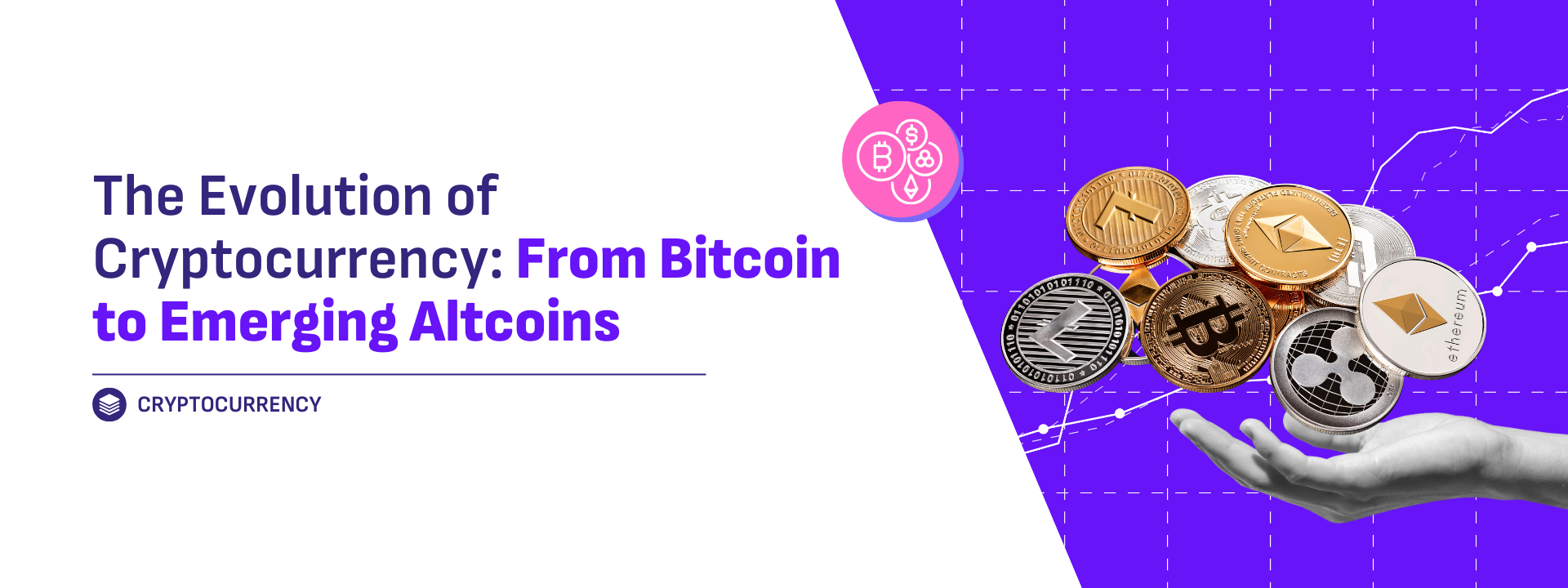

The Evolution of Cryptocurrency: From Bitcoin to Emerging Altcoins
Introduction
The cryptocurrency landscape has undergone significant transformation since the inception of Bitcoin in 2009. What began as a revolutionary digital currency concept has expanded into a diverse ecosystem of cryptocurrencies, known as altcoins. This article explores the evolution of cryptocurrency, tracing the development of Bitcoin and examining the rise of emerging altcoins.
The Birth of Bitcoin
Bitcoin, created by an anonymous entity known as Satoshi Nakamoto, marked the beginning of the cryptocurrency revolution. Released in January 2009, Bitcoin was designed as a decentralized digital currency that operates without a central authority, using blockchain technology to ensure secure and transparent transactions.
Key Features of Bitcoin
- Decentralization: Bitcoin operates on a decentralized network of computers, known as nodes, which work together to validate transactions and maintain the blockchain ledger.
- Limited Supply: Bitcoin has a capped supply of 21 million coins, a feature designed to mimic the scarcity of precious metals and prevent inflation.
- Proof of Work: Bitcoin utilizes a consensus mechanism called Proof of Work (PoW) to secure the network and validate transactions, requiring miners to solve complex mathematical problems.
The Rise of Altcoins
As Bitcoin gained traction, developers and innovators began to explore new possibilities within the cryptocurrency space, leading to the creation of alternative cryptocurrencies or altcoins. Altcoins are digital currencies that offer various improvements, enhancements, or different use cases compared to Bitcoin. Some notable altcoins and their contributions to the cryptocurrency ecosystem include:
1. Ethereum (ETH
Launched in 2015 by Vitalik Buterin, Ethereum introduced the concept of smart contracts—self-executing contracts with terms directly written into code. Ethereum’s platform allows developers to build and deploy decentralized applications (dApps) and issue new cryptocurrencies, known as tokens, on its blockchain.
- Smart Contracts: Enable automated, trustless transactions and decentralized applications.
- ERC-20 Tokens: Standardized token protocol that facilitates the creation of new tokens on the Ethereum network.
2. Ripple (XRP)
Ripple, founded in 2012, focuses on revolutionizing the global financial system by facilitating fast and low-cost cross-border transactions. Unlike Bitcoin and Ethereum, Ripple’s XRP is not a fully decentralized cryptocurrency but rather a digital asset designed to improve the efficiency of international payments.
- Real-Time Settlement: Offers rapid transaction processing and settlement, reducing the time and cost of cross-border payments.
- Partnerships with Financial Institutions: Collaborates with banks and financial institutions to integrate Ripple’s technology into existing payment systems.
3. Litecoin (LTC)
Created by Charlie Lee in 2011, Litecoin is often referred to as the “silver” to Bitcoin’s “gold.” Litecoin aimed to improve upon Bitcoin’s technology by offering faster transaction times and a different hashing algorithm, known as Scrypt.
- Faster Block Generation: Reduces transaction confirmation times to approximately 2.5 minutes compared to Bitcoin’s 10 minutes.
- Scrypt Algorithm: Provides a more memory-intensive mining process, making it less susceptible to ASIC (Application-Specific Integrated Circuit) mining domination.
4. Cardano (ADA)
Founded by Charles Hoskinson, a co-founder of Ethereum, Cardano is a blockchain platform focused on sustainability, scalability, and interoperability. Launched in 2017, Cardano emphasizes a research-driven approach to blockchain development and utilizes a unique consensus mechanism known as Proof of Stake (PoS).
- Research-Driven Development: Incorporates academic research and peer-reviewed studies into its development process.
- Proof of Stake (PoS): Consensus mechanism that reduces energy consumption compared to PoW.
5. Polkadot (DOT)
Polkadot, developed by Dr. Gavin Wood, another Ethereum co-founder, aims to enable interoperability between different blockchains. Launched in 2020, Polkadot facilitates communication and data exchange between various blockchain networks, creating a multi-chain ecosystem.
- Cross-Chain Compatibility: Enables different blockchains to interact and share information.
- Parachains: Independent blockchains that can connect to the Polkadot network, benefiting from shared security and scalability.
Emerging Altcoins and Innovations
As the cryptocurrency space continues to evolve, new altcoins and innovations are constantly emerging. These include:
- Decentralized Finance (DeFi) Tokens: Cryptocurrencies and tokens associated with decentralized financial services, such as lending, borrowing, and trading on decentralized platforms (e.g., Uniswap, Aave).
- Non-Fungible Tokens (NFTs): Unique digital assets that represent ownership of distinct items, such as digital art or collectibles (e.g., CryptoPunks, Bored Ape Yacht Club).
- Layer 2 Solutions: Technologies designed to improve scalability and transaction speeds on existing blockchain networks (e.g., Polygon, Optimism).
Summary
The evolution of cryptocurrency has transformed the financial landscape, beginning with Bitcoin’s revolutionary technology and expanding into a diverse array of altcoins with unique features and use cases. As the cryptocurrency ecosystem continues to grow and innovate, staying informed about new developments and understanding the underlying technologies can help investors and enthusiasts navigate this dynamic and rapidly changing space.


